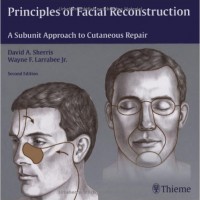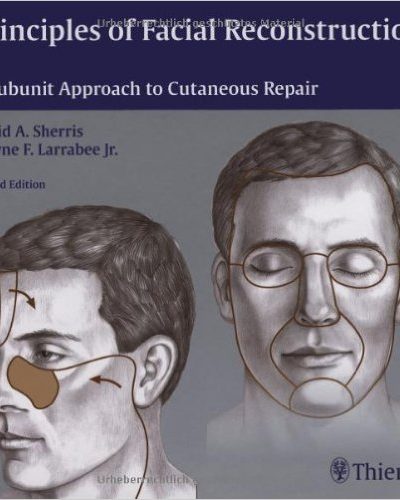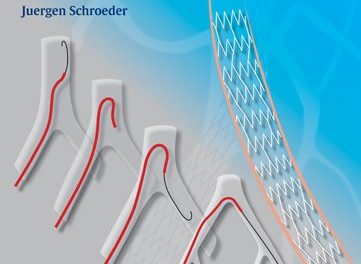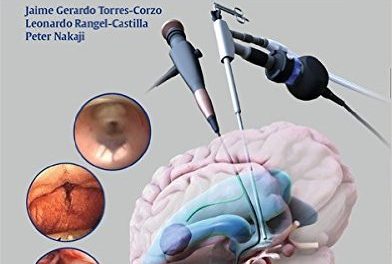 Editors: David A. Sherris, MD; and Wayne F. Larrabee, Jr., MD
Editors: David A. Sherris, MD; and Wayne F. Larrabee, Jr., MD
Publisher: Thieme – 311 pages
Book Review by: Nano Khilnani
The goal of the editors of this book is to provide effective techniques of facial reconstruction by presenting key principles in a clear, graphically consistent manner. Only one or two techniques are shown for each problem, instead of many possible techniques. The defect sizes for each flap are meant only as guidelines for surgeons who are less experienced, the editors – Drs. David Sherris and Wayne Larrabee – point out.
A total of six physicians including the two editors, contributed to the content of this book. They are all involved in facial and plastic surgery and/or head and neck surgery. The principles of surgery and the surgical techniques that are clearly shown, on various sections of the head and face, are covered in the following ten chapters:
- Soft Tissue Biomechanics and Physiology
- Fundamental Techniques
- Scalp
- Forehead
- Eyes
- Nose
- Cheek
- Ears
- Lips and Chin
- Graft Harvest Techniques
Most chapters are refreshingly short, with lots of space used for detailed drawings and full-color photos of patients who are undergoing or have undergone various surgical procedures. This is basically a “learn-by-seeing” book with numerous illustrations and a minimum of text. But it is important to read the text – containing instructions – very carefully, to gain the most benefit from this handy and practical guide.
Let’s take a look at chapter 6 – Nose – to learn what you will typically find in the chapters. At the beginning of this chapter you will see on the left side page an initial discussion on the structure of the nose from a facial surgery viewpoint. On the right is a sketch of a male head with the external parts of his nose highlighted and marked with these basic components: dorsal, sidewall, tip, soft triangle, columellar, and alar.
The author of this chapter writes: “The complex contours of the nose reflect the underlying structure and variations in the thickness of the skin – soft tissue envelope. In general, the three layers of the nose – skin, bony or cartilaginous framework, and mucosal lining – should each be reconstructed separately. The skin itself is thick and sebaceous over the nasal tip and ala, and thin over the nasal dorsum and sidewalls. The skin is more mobile over the superior two-thirds of the nose.” And so on he describes the structure and shape of the nose.
He then goes on to describe how surgical procedures are to be undertaken on various parts of the nose. The same format is essentially utilized in the other chapters.
Among the key features of this second edition are:
- Algorithms that guide the clinician through treatment options to the selection of the appropriate flap or graft for each situation
- Over 300 high-quality illustrations, full-color clinical photographs, and diagrams precisely depicting key surgical concepts
- Up-to-date coverage of the newest flaps in facial reconstructive surgery
Who can benefit from this book? Clinicians and residents in otolaryngology – head and neck surgery, facial plastic and reconstructive surgery, oral and maxillofacial surgery, and trauma management, will find this book very useful. Dermatologists and ophthalmologists can also use this handy book as a good reference resource.
Editors:
David A. Sherris, MD is Professor and Chairman of the Department of Otolaryngology at University of Buffalo, State University of New York in Buffalo, New York.
Wayne F. Larrabee, Jr., MD, MSPH is Clinical Professor of Facial Plastic Surgery in the Department of Otolaryngology – Head and Neck Surgery, at the University of Washington; and Director of the Larrabee Center for Facial Plastic Surgery in Seattle, Washington.







